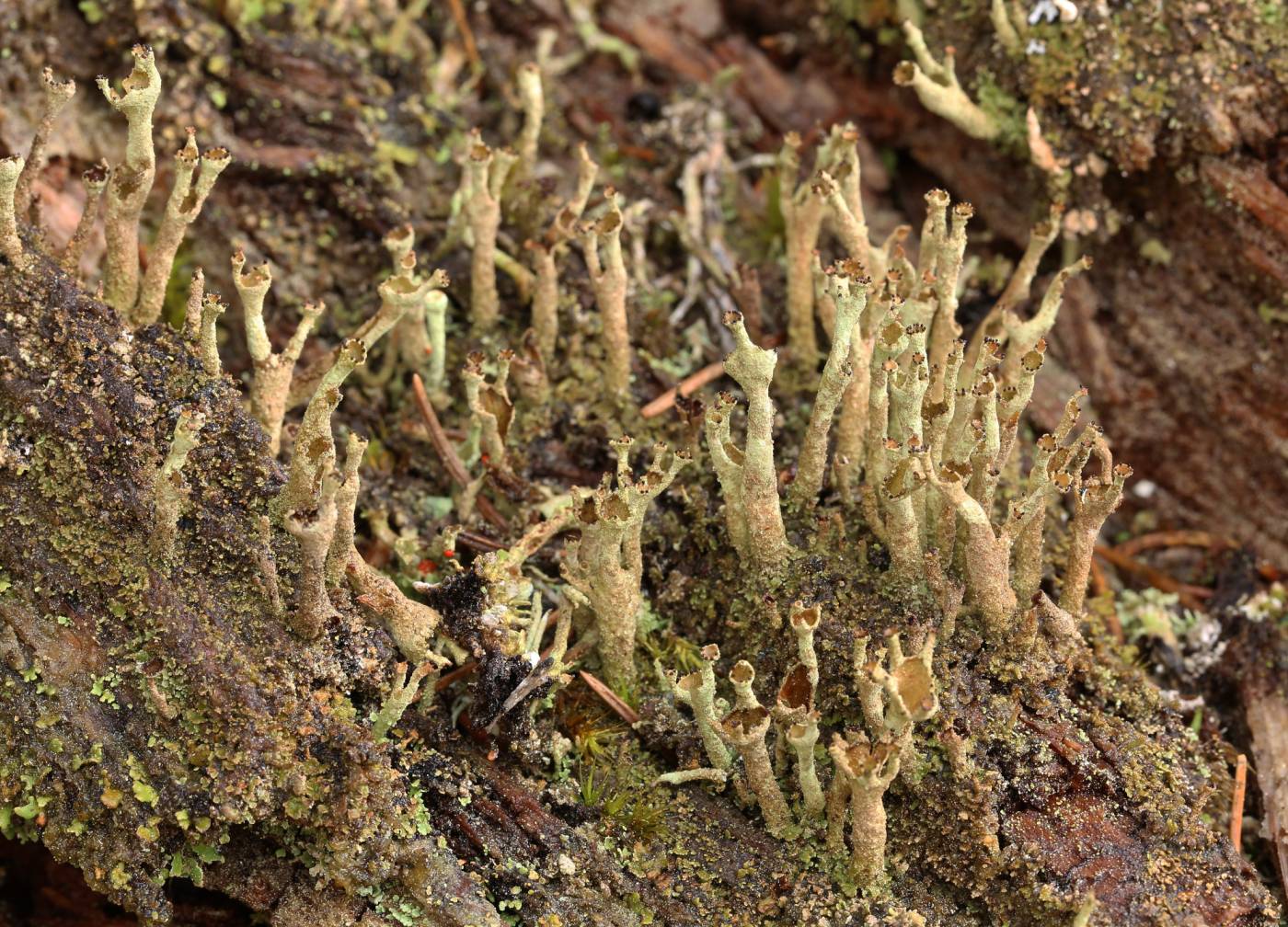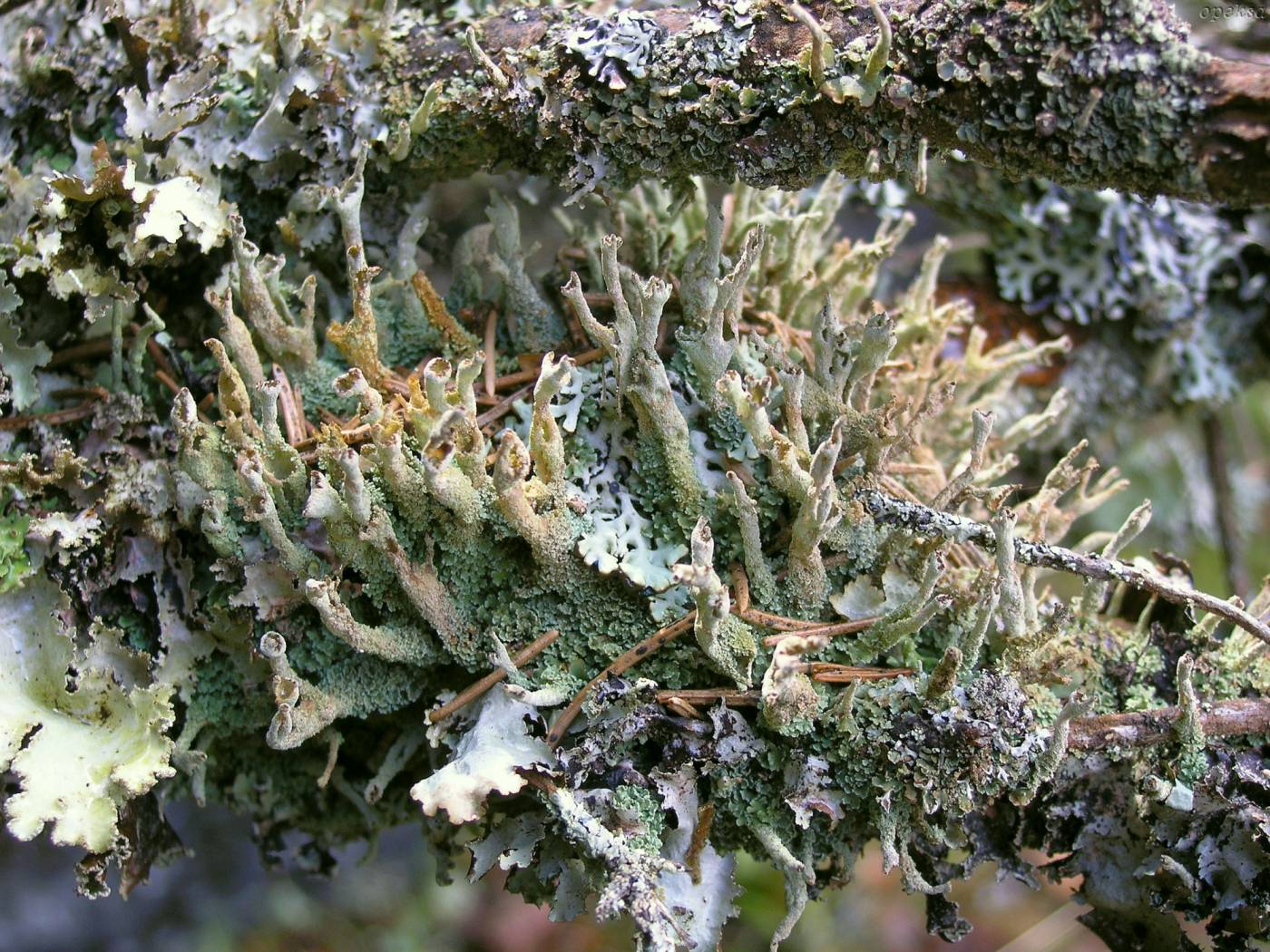A finely sorediate, scyphose Cladonia species whose podetia are usually irregularly divided (branched) in the upper part and conspicuously perforated in the centre. Squamatic acid (UV+ white) is diagnostic for the species. Most commonly, it occurs on decaying wood, but also at tree bases, peat and humus. It is a boreal-montane species. In central Europe and the Czech Republic, C. cenotea is common in forested mountain areas, rare at lower elevations and absent from the warmest areas.
taxonomic classification:Ascomycota → Lecanoromycetes → Lecanorales → Cladoniaceae → Cladonia
Red List (Liška & Palice 2010):LC – least concern
Occurrence in the Czech Republic
All records: 276, confirmed 262. One click on a selected square displays particular record(s), including their source(s).

